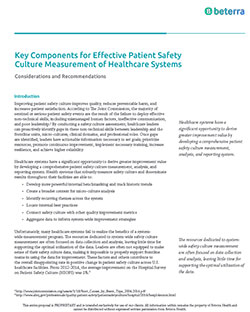March 14 – 20th marks yet another National Patient Safety Week. This annual event creates a platform for organizations to develop and grow awareness about patient safety.
Why does it matter?
Much has been said and written about why patient safety matters. Yet, we encounter at least half a million deaths due to adverse events every year (We know the numbers are only higher.) COVID-19 has shown the gaping wounds and vulnerabilities on staff safety both physically and emotionally.
How should we conduct and elevate patient safety awareness week during these unprecedented times?
Every healthcare administrator, quality and safety leader, and caregiver has this question. The only thing we can do is be as sensitive to the ground reality while advancing the cause of safety. This year’s patient safety week gives us a unique and dedicated opportunity to advance the cause of safety and staff wellbeing. When planning, there are five design principles to consider:
- Show commitment to patient and staff safety: Organizational leaders should openly acknowledge and display their commitment to patient safety. They should use every opportunity to inspire action and promote support at the micro-culture (unit or department) level and the leadership level. Also, remember not all staff are going to be “onsite.” You will need to be creative in your efforts.
- Acknowledge staff safety issues due to COVID-19: As we battle the pandemic, our frontline heroes are among the most vulnerable. Have them in mind when making plans. Listen and respond to their concerns about their wellbeing.
- Engage your frontline staff: Devise your plans to engage frontline staff by recognizing and highlighting patient safety champions, departmental successes and displaying patient safety improvement projects. Don’t forget the staff and committees who work to improve patient safety daily.
- Encourage patient and family engagement: Put patients at the center of your messaging. Encourage patients and family members to put them at the center of their care—Ideate simple programs to advance patient safety through improved patient and family communication and health literacy, especially in the high-risk areas where COVID patients are getting treated.
- Launch safety awareness or safety improvement programs. Despite the strains of COVID, this is still an excellent opportunity to launch your safety improvement programs, such as an integrated safety assessment that includes staff safety and joy at work components.
Here are three tips that we collected from our clients globally.
- The pen is mightier than the sword: Communication from the CEO highlights the commitment and organizational focus on patient and staff safety. Daily emails with useful safety tips (beware of flooding the inbox!)
- A picture is worth a thousand words: Display patient safety projects, safety photographs, patient incident posters, staff images, quotes, etc., both physically in high traffic areas and on the intranet.
- There is no end to learning moments: Have internal or external experts give an educational talk on patient safety improvement. Launch an awareness campaign on the pressing safety issues your organization face or could face in 2021.
The digital awareness efforts are significant this year since not all staff will be onsite due to COVID restrictions.


